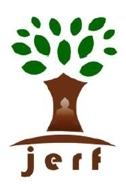Biography:
Ellen Gough recently completed her Ph.D. dissertation, “Making a Mantra: Jain Superhuman Powers in History, Ritual, and Material Culture,” from the Department of Religious Studies at Yale University. Before coming to Yale, she earned her MA in Religion from the School of Oriental and African Studies, University of London. In the fall of 2015, she will join the faculty of Religious Studies at Emory University. Her research focuses on Jain Tantra, with her article on the Ṛṣimaṇḍala, “Shades of Enlightenment: A Jain Tantric Diagram and the Colours of the Tīrthaṅkaras” published in the International Journal of Jaina Studies (2012), and “Wheel of the Liberated: Jain Siddhacakras, Past and Present” published in Objects of Worship in South Asian Religions (Routlege, 2014).
Overview:
This lecture will focus on the relationship between enlightenment, or omniscience (kevala), and final liberation (mokṣa, nirvāṇa) in the Ācārāṅgasūtra, comparing it with other Jain and non-Jain accounts of enlightenment and liberation. Key to this discussion will be questions about the nature of the soul and karma as understood in the earlier Ācārāṅga I (c. 4th-3rd cent. BCE) and the later Ācārāṅga II (c. 3rd-1st cent. BCE).
Later accounts of the path to liberation in Jainism, as exemplified in the Tattvārthasūtra (TS; c. 4th-5th cent. CE), explain that after one has destroyed the four harming (ghātiyā) karmas, one achieves omniscience (kevala) and becomes and arhat, and once one destroys all eight types of karma, both harming and non-harming (aghātiyā), one achieves liberation (mokṣa) and becomes a siddha see (TS 10.1-3). Thus, complete separation of the soul (jīva) and karma constitutes liberation.
How does this account from the Tattvārthasūtra compare to earlier accounts in the Ācāraṅga? What is “enlightenment” in the Ācāraṅga? When is the moment of liberation? Can it occur when one is living, or must it occur at the time of death? How do these ideas relate to contemporaneous Buddhist and Hindu ideas about enlightenment and liberation? This lecture will address these questions by comparing select passages of the Ācāraṅga with other descriptions of enlightenment and liberation in Jain and non-Jain texts.
Suggested Primary Readings in English:
- Ācāraṅga Sūtra. Translated by Hermann Jacobi in Jaina Sūtras I. SBE Vol. 22, 1213. Oxford: Clarendon Press, 1884. (Reprint Delhi: Motilal Banarsidass, 2002).
- The Kalpa Sūtra. Translated by H. Jacobi in Jaina Sūtras I. SBE Vol. 22. Oxford: Clarendon Press, 1884. (Reprint Delhi: Motilal Banarsidass, 2002). (Read the “Lives of the Jinas”)
- Tattvārtha Sūtra. Translated by Nathmal Tatia as That Which Is. New York: HarperCollins, 1994. (Read Chapter 10)
- Suggested Secondary Readings in English:
- Bronkhorst, Johannes. The Two Traditions of Meditation in Ancient India. Delhi: Motilal Banarsidass, 1993. (Reprint 2000).
- Dundas, Paul. "Food and Freedom: The Jaina Sectarian Debate on the Nature of the Kevalin." Religion 15 (1985): 161-198.
- Dixit, K. K. Early Jainism. Ahmedabad: L. D. Institute of Indology, 1978.
- Johnson, William. Harmless Souls. Karmic Bondage and Religious Change in Early Jainism with Special Reference to Umāsvāti and Kundakunda. Delhi: Motilal Banarsidass, 1995. (Read Chapter 1)
- Malvania, Dalsukh D. "Beginnings of Jaina Philosophy in the Ācāraṅga." In Studien zum Jainismus und Buddhismus (Gedenkschrift für Ludwig Alsdorf). Edited by K. Bruhn & A. Wezler, 151-153. Universität Hamburg: Steiner Verlag, 1981.

